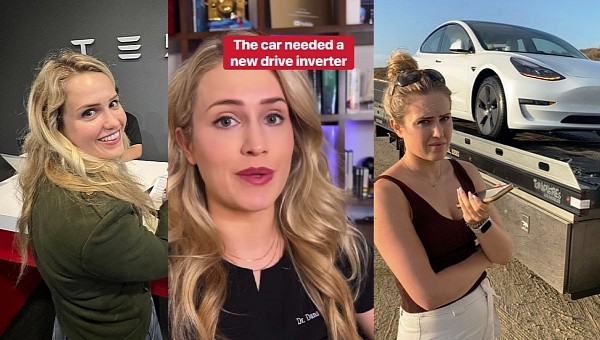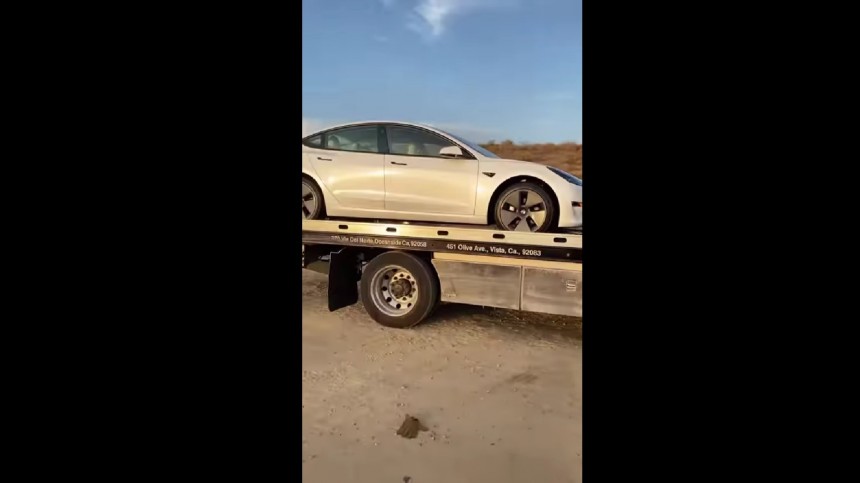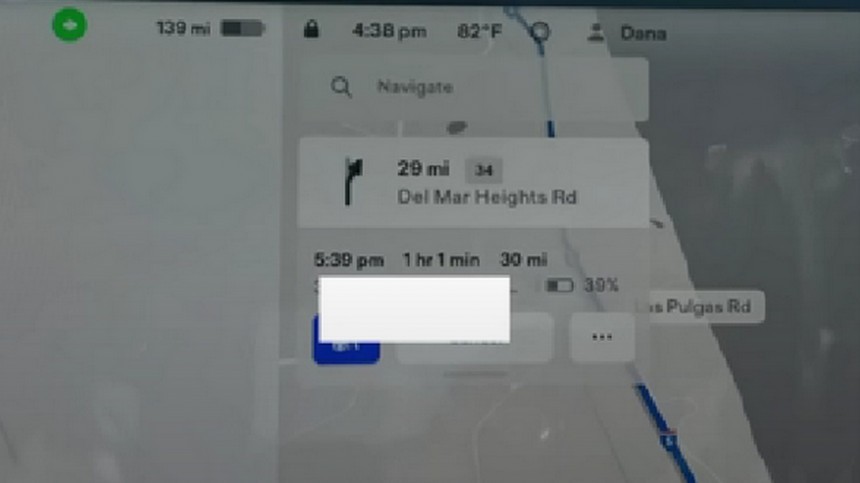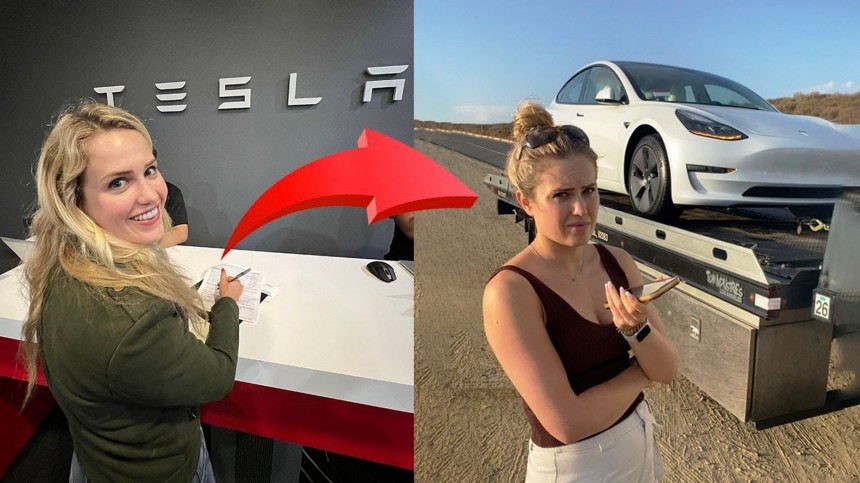Dana Brems’ story with her brand-new Tesla Model 3 got quickly famous for how serious it was. She had driven it for a few hundred miles when it stopped in the left lane of the I-5 freeway after a blind corner. That could have caused a massive crash. Luckily, that didn’t happen. Tesla told her the problem was a low charge, which she proved was not the case. The EV maker finally gave her a proper diagnostic: a bad rear drive unit.
Unfortunately, Brems did not get back to us after we sent her several messages to learn more about her case. In her original video, the doctor said she tried to return the car, but Tesla would not buy it back. We asked her if she was planning to sue the EV maker to get her money back and if other Model 3 owners with similar issues had contacted her about that. She didn’t answer, but now we understand why.
On the same day she published her video complaining about the whole situation, Tesla decided to check her car again, and – surprise, surprise – it discovered the rear drive unit needed to be replaced because it had a bad inverter. We’d ask her if that made her feel safe to drive again if she got in contact with us or if she would still try to get rid of her car.
Her Model 3 only qualifies as a lemon in California “if the manufacturer or dealer can’t repair a serious warranty defect in your vehicle after a ‘reasonable’ number of attempts.” According to California’s Lemon Law Presumption, that means four or more attempts or more than 30 days in the shop for repairs covered by the warranty.
Brems said that her car went from 140 miles of range to 29 miles until the service center said it was checking the EV. Sentry Mode was on, but it deactivated when the charge dropped to such a low level the battery pack could not power it anymore. Tesla used that to say the doctor was to blame.
She argued that she still had plenty of range left, but the Tesla clerk said she should have charged the car because “even if you think you have 200-something miles in range, your battery percent life would be something different.” Brems recorded that to prove she really had to hear that.
Sadly, there is no guarantee she will not have the same problem again, especially with how Tesla dealt with her. Rear drive unit issues are not new, and the EV maker has done very little to explain or fix them – at least in the U.S.
On April 5, ConsumerAffairs warned that Model Y EVs were having rear motor failures at an alarming rate. Coincidence or not, Tesla recalled 127,785 Model 3 units in China on April 7 due to a rear drive unit inverter problem – the same issue Brems’ car presented. In the U.S., Tesla just warned the National Highway Traffic Safety Administration (NHTSA) on April 8 but presented no plan to do the same in America.
The Model Y and the Model 3 use the same rear motors, but the problem is way more widespread than that, even with cars with different drive units. On August 27, a Model S Plaid caught fire due to a rear motor defect. Hansjörg von Gemmingen – the man who drove a Model S to more than 1 million miles – had to replace the rear motor in his car “11 or 12” times to get there.
It is important to stress that Tesla imported from Fremont 34,207 of the 127,785 Model 3 units recalled in China. The motors and inverters are technically the same, and Tesla never explained why it recalled them in China and left them to fail in the middle of the freeway in the U.S. It is almost as if Tesla feared the Chinese government but did not mind NHTSA that much. Brems’ case suggests that story might be right on target.
On the same day she published her video complaining about the whole situation, Tesla decided to check her car again, and – surprise, surprise – it discovered the rear drive unit needed to be replaced because it had a bad inverter. We’d ask her if that made her feel safe to drive again if she got in contact with us or if she would still try to get rid of her car.
Brems said that her car went from 140 miles of range to 29 miles until the service center said it was checking the EV. Sentry Mode was on, but it deactivated when the charge dropped to such a low level the battery pack could not power it anymore. Tesla used that to say the doctor was to blame.
She argued that she still had plenty of range left, but the Tesla clerk said she should have charged the car because “even if you think you have 200-something miles in range, your battery percent life would be something different.” Brems recorded that to prove she really had to hear that.
On April 5, ConsumerAffairs warned that Model Y EVs were having rear motor failures at an alarming rate. Coincidence or not, Tesla recalled 127,785 Model 3 units in China on April 7 due to a rear drive unit inverter problem – the same issue Brems’ car presented. In the U.S., Tesla just warned the National Highway Traffic Safety Administration (NHTSA) on April 8 but presented no plan to do the same in America.
It is important to stress that Tesla imported from Fremont 34,207 of the 127,785 Model 3 units recalled in China. The motors and inverters are technically the same, and Tesla never explained why it recalled them in China and left them to fail in the middle of the freeway in the U.S. It is almost as if Tesla feared the Chinese government but did not mind NHTSA that much. Brems’ case suggests that story might be right on target.














